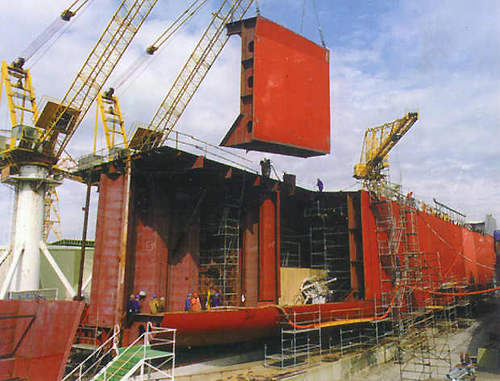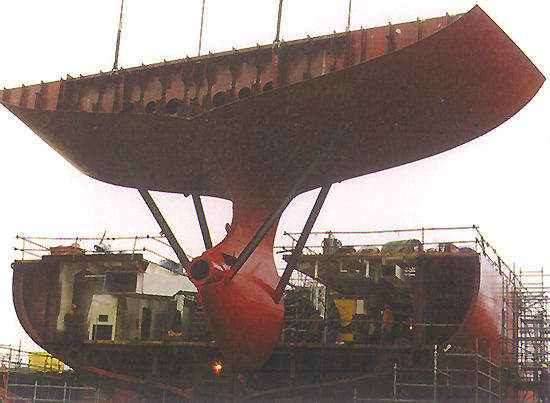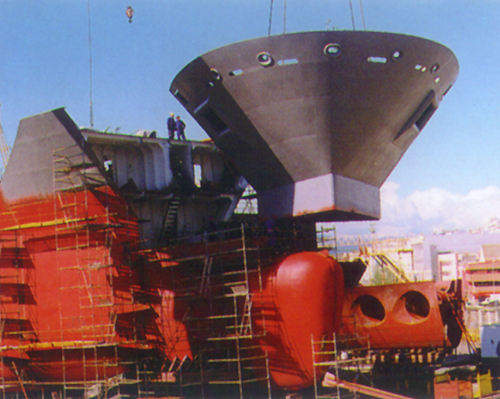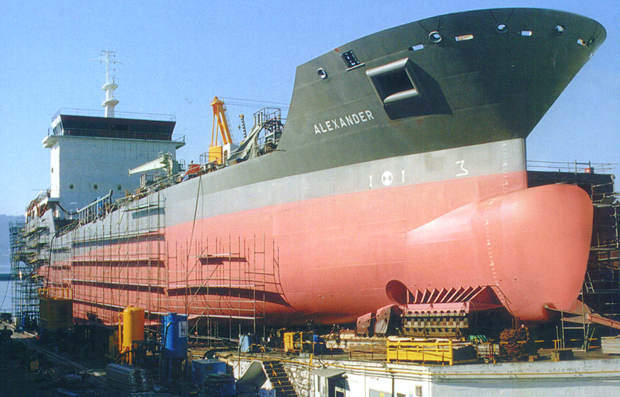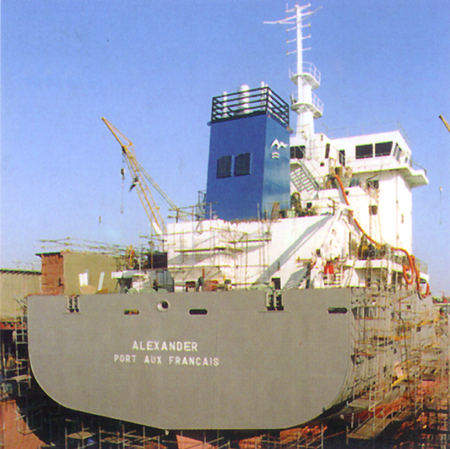The Alexander is an Oil/Chemical Tanker designed to carry clean and dirty petroleum products and IMO type two chemicals, with one man bridge operation and ice Class 1 C. It was built by Hijos de J Barreras of Spain.
DESIGN
The vessel has an overall length of 115.3m, a moulded breadth of 18.6m and the moulded depth to main deck is 10.25m. The moulded draught is 7.1m.
The tanker’s maximum load draught is 7.6m and its scantling draught is 7.8m with a corresponding deadweight of 8,300t. It has a 400m³ fuel-oil capacity, a 120m³ diesel-oil capacity, a 20m³ lube oil capacity, a 100m³ fresh water capacity and 150m³ of industrial fresh water.
CARGO SYSTEMS
The Alexander can carry 9,800m³ of cargo (including the 100m³ slop tanks). Cargo is distributed by ten hydraulically powered pumps of 290m³/h and two pumps of 120m³/h for the slop tanks. There is also one 75m³/h portable pump. There are four 205kW and one 2kW electro/hydraulic powered units and a 3kW/3,500rpm oil transfer unit.
Its inert gas system consists of a membrane air separator unit for 725Nm³/h nitrogen generation, two 110kW feed air compressors, a 10m³ at 10bar Nitrogen receiver and a Nitrogen reducer cabinet with three discharging lines.
The tanks have monitoring systems for temperature, vapour pressure, pump and manifold pressure, cargo pumps and piping and tank radar gauging, and there is an independent system for high/high level alarms of cargo tanks. Each tank hatch trunk is fitted with gas freeing lines, carrying the vapours to high speed P/V valves (+0.2bar, -0.035bar) at the top of two structural towers on the deck. All cargo tanks are equipped with a control system with remote readings, integrated with the engine room automation system.
There are two hydraulically driven combined anchor-double drum mooring winches (fore) and two hydraulically driven double drum mooring winches (aft). One deck crane for cargo hose handling is installed amidships, at the manifold. It is hydraulically operated, of 5t SWL with 14m outreach.
PROPULSION
The Alexander is powered by a single non-reversible main engine and a conventional four stroke turbocharger, which is able to develop a maximum continuous rating of 3,600kW (5,382bhp) at 750rpm.
The Shaft Line has a controllable pitch propeller and elastic coupling. The gearbox incorporates a clutch for the engine connection to an alternator-motor of 750kW to 900kW. There is also one 3,930-litre Eco Flowtherm (thermal oil boiler) of 5,200kW capacity and one 1,336-litre exhaust gas boiler with heat surface of 131m². The trail speed is 14 knots.
A piston type steering gear with automatic safety valves drives a flap type rudder. There is an emergency Diesel engine, which is rated at 105kW at 1,500rpm, and an emergency generator which produces 100kW at 400V 50Hz.
To enable docking and manoeuvring, the Alexander has one tunnel bow thruster with controllable pitch, with an output of 440kW, driven by an electrical motor. Control of the thruster can be achieved from the wheelhouse and the bridge wings.
AUTOMATION AND CONTROL
The vessel has a GMDSS A-3 Radio communication station and includes a radio console, VHF radiotelephone with DCS for channel 70, 2 Inmarsat C terminals, one Inmarsat B terminal, a Navtex rescue receiver and three portable VHF walkies.
Amongst the navigation aids is a gyrocompass, auto-pilot, radars, GPS equipment, echosounder, Morse light control, radiogoniometer, Decca navigator and depth graph recorder.

